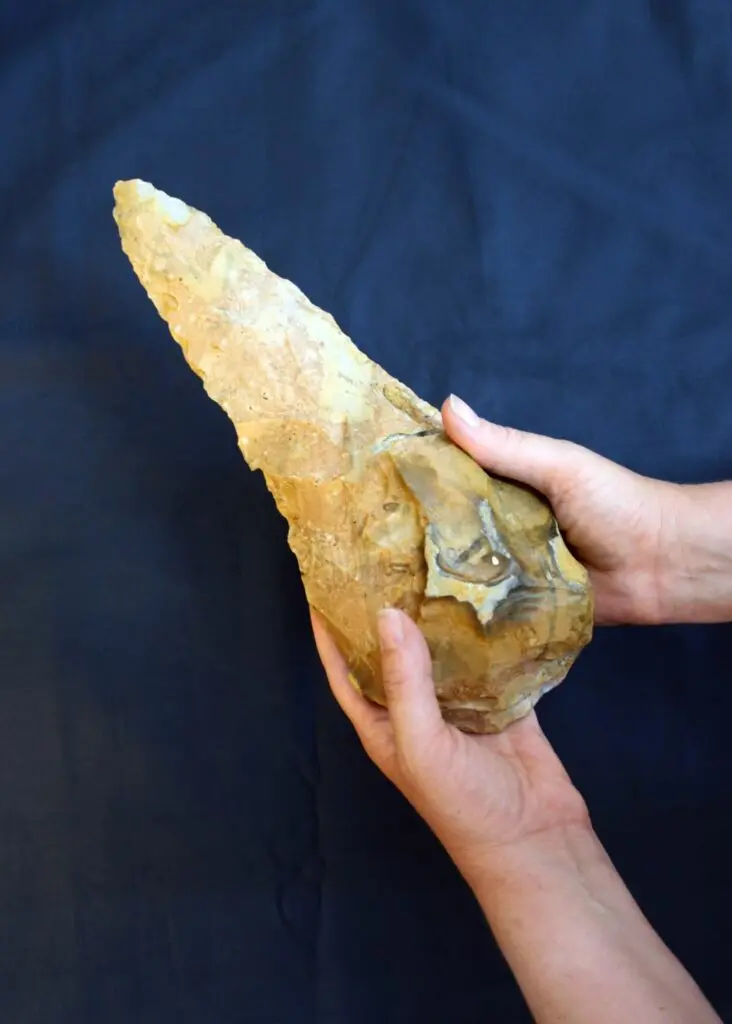A Prehistoric Treasure Trove
Archaeologists from University College London (UCL) have made a groundbreaking discovery during excavations at an Ice Age site in Kent, England. The team unearthed a collection of prehistoric stone handaxes, including two exceptionally large specimens, dating back approximately 300,000 years.

A Serendipitous Find
The site, situated above the Medway Valley, was brought to light during preparations for the development of the Maritime Academy School in Frindsbury. A filled-in sinkhole and river channel revealed layers of sediment that offered a glimpse into the distant past.
Giant Handaxes: A Symbol of Human Ingenuity
Among the artifacts discovered were two flint handaxes, described as “giant” due to their substantial size, measuring up to 29.5 centimeters in length. These tools, crafted with remarkable precision, are believed to be some of the largest stone implements from the Palaeolithic period found within Britain.
A Window into the Past
The handaxes provide invaluable insights into the lives of our early ancestors. They were likely used for a variety of tasks, including hunting, gathering, and preparing food. The sophisticated craftsmanship and size of these tools suggest that the individuals who created them possessed advanced skills and knowledge.
Life During the Ice Age
The discovery of these handaxes offers a glimpse into the challenging conditions faced by humans during the Ice Age. The region would have been a harsh environment, with glaciers and ice sheets covering much of the landscape. Despite these challenges, our ancestors were able to adapt and thrive, developing tools and technologies that enabled them to survive and prosper.
A Significant Contribution to Archaeology
The excavation of the Ice Age site in Kent represents a significant contribution to the field of archaeology. The discovery of the giant handaxes provides new evidence of the technological capabilities and ingenuity of our early ancestors.
As archaeologists continue to study these ancient artifacts, we can expect to learn even more about the lives and cultures of the people who inhabited this region hundreds of thousands of years ago.





